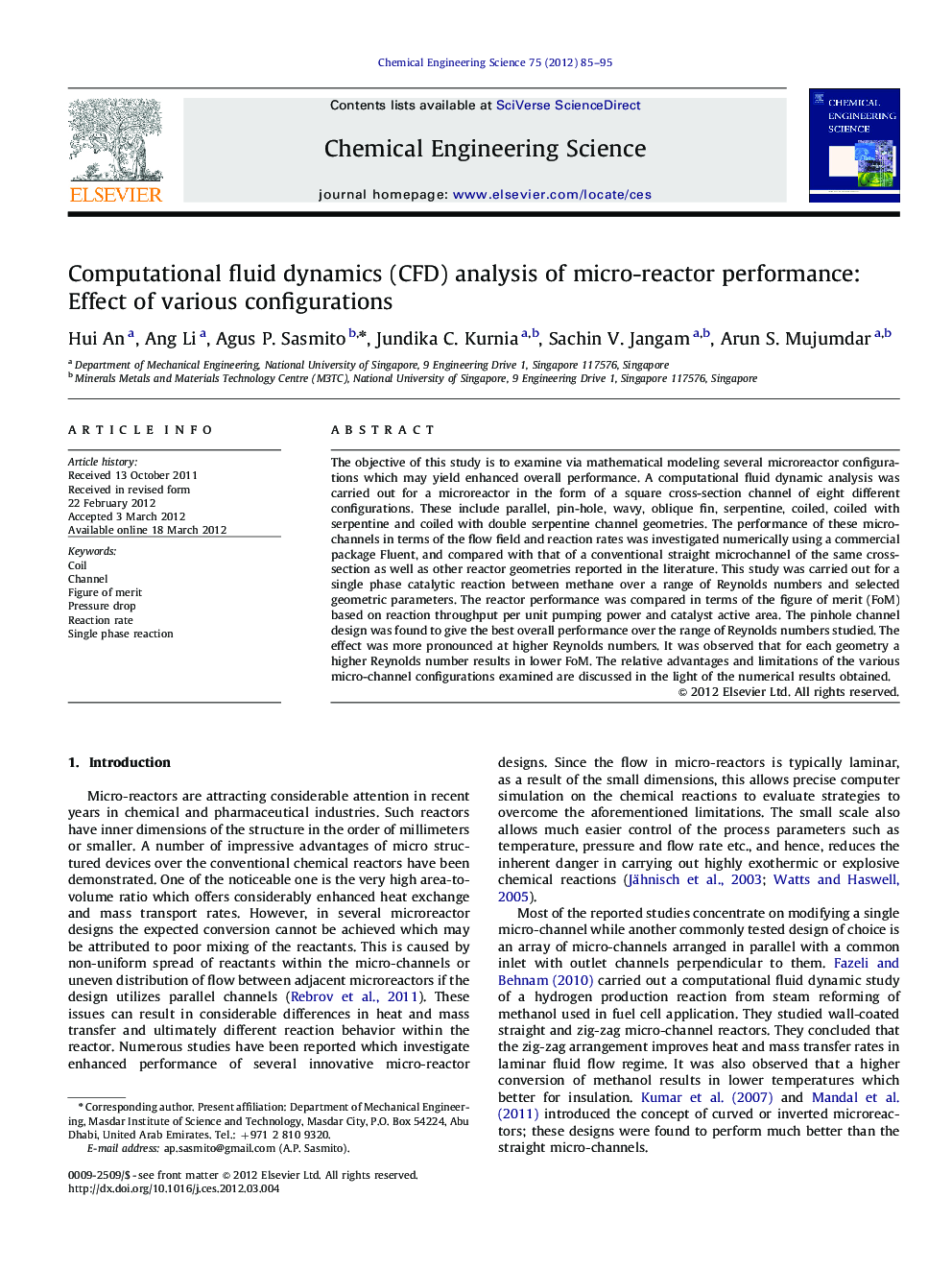| Article ID | Journal | Published Year | Pages | File Type |
|---|---|---|---|---|
| 155686 | Chemical Engineering Science | 2012 | 11 Pages |
The objective of this study is to examine via mathematical modeling several microreactor configurations which may yield enhanced overall performance. A computational fluid dynamic analysis was carried out for a microreactor in the form of a square cross-section channel of eight different configurations. These include parallel, pin-hole, wavy, oblique fin, serpentine, coiled, coiled with serpentine and coiled with double serpentine channel geometries. The performance of these micro-channels in terms of the flow field and reaction rates was investigated numerically using a commercial package Fluent, and compared with that of a conventional straight microchannel of the same cross-section as well as other reactor geometries reported in the literature. This study was carried out for a single phase catalytic reaction between methane over a range of Reynolds numbers and selected geometric parameters. The reactor performance was compared in terms of the figure of merit (FoM) based on reaction throughput per unit pumping power and catalyst active area. The pinhole channel design was found to give the best overall performance over the range of Reynolds numbers studied. The effect was more pronounced at higher Reynolds numbers. It was observed that for each geometry a higher Reynolds number results in lower FoM. The relative advantages and limitations of the various micro-channel configurations examined are discussed in the light of the numerical results obtained.
► We investigate several microreactor designs with single-phase catalytic reaction. ► Flow behavior inside reactor significantly affect the conversion rate. ► Reactor performance is compared in terms of reaction rate, pressure drop and “figure of merit”. ► Pinhole channel design was found to give the best overall performance over the range of Reynolds numbers studied.
